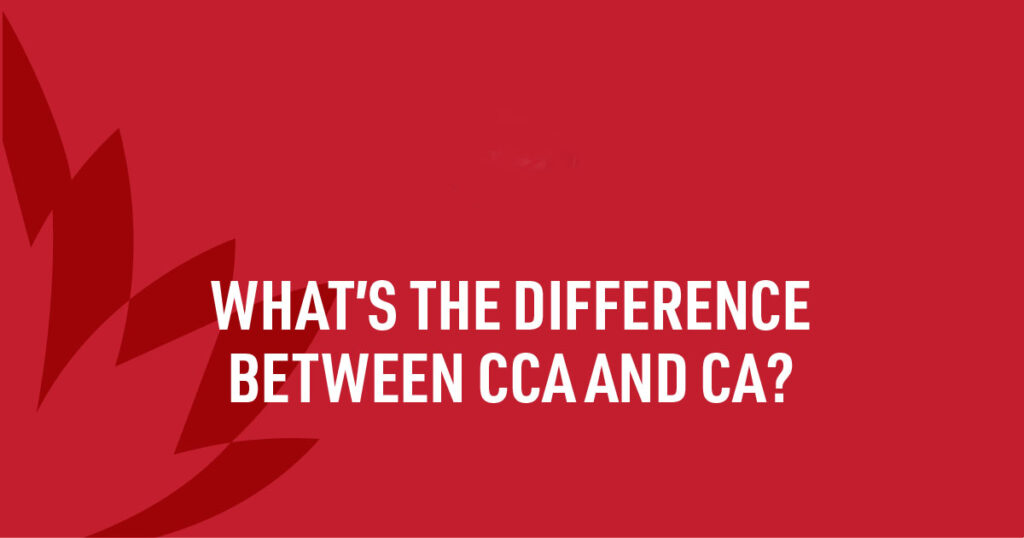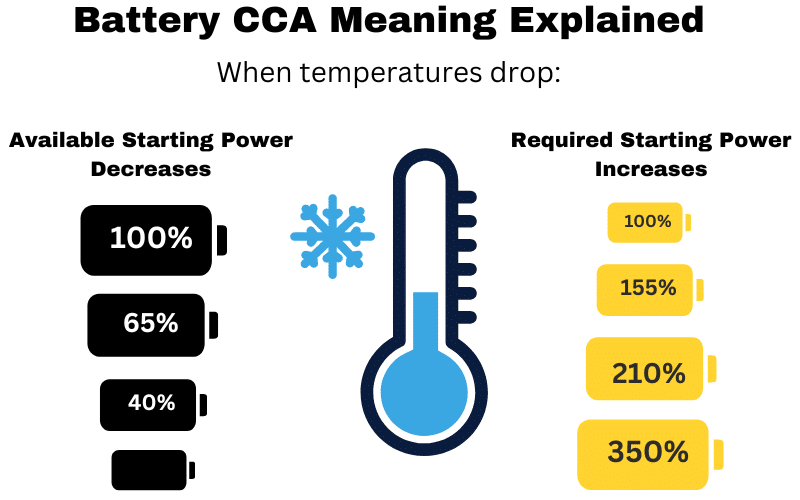When you shop for a car battery or a marine starting battery, two acronyms almost always appear on the label: MCA (Marine Cranking Amps) and CCA (Cold Cranking Amps). They look similar, but the difference between them can determine whether your engine starts easily on a freezing morning—or leaves you stuck at the dock.
This guide will break down exactly what MCA and CCA mean, how they are tested, why the numbers are different, and how to choose the right battery rating for your vehicle or boat.

MCA and CCA: Clear Definitions
MCA (Marine Cranking Amps)
MCA is a measure of how many amps a fully charged 12-volt battery can deliver at 32°F (0°C) for 30 seconds while maintaining a voltage of at least 7.2V (1.2V per cell).
Because the test temperature is relatively warm, MCA values are usually higher than CCA values for the same battery. MCA ratings are often used on marine starting batteries—the kind used to start an outboard motor or run onboard electronics—because most boating applications don’t involve freezing temperatures.
CCA (Cold Cranking Amps)
CCA uses the exact same test procedure, except it is measured at a much colder 0°F (–18°C). This is the standardized Battery Council International (BCI) test for automotive batteries and reflects a battery’s ability to start an engine in harsh winter conditions.
The colder the temperature, the slower the chemical reaction inside the battery, and the less current it can produce. That’s why CCA ratings are always lower than MCA ratings for the same battery.
Key Differences at a Glance
| Feature | MCA (Marine Cranking Amps) | CCA (Cold Cranking Amps) |
|---|---|---|
| Test Temperature | 32°F / 0°C | 0°F / –18°C |
| Test Duration | 30 seconds | 30 seconds |
| Minimum Voltage (12V Battery) | 7.2V | 7.2V |
| Typical Applications | Boats, warm-weather vehicles | Cars, trucks, powersports, cold climates |
| Typical Value | ~20–25% higher than CCA for the same battery | Lower, because battery output drops at cold temps |
The bottom line: MCA is essentially “warm-weather CCA.” If you know one value, you can estimate the other (MCA ≈ CCA × 1.2–1.25).
Why MCA is Higher Than CCA
Battery chemistry is temperature-sensitive. At low temperatures, the electrolyte becomes more viscous, the internal resistance rises, and the chemical reaction slows down. That means less current is available for starting.
Because MCA is tested at 32°F instead of 0°F, the battery can deliver more amps under the same load. For this reason, MCA ratings are always higher for the same battery. For example:
650 CCA ≈ 780–810 MCA
800 MCA ≈ 640–665 CCA
This 20–25% spread is a rule of thumb used by many battery makers, including Odyssey, Interstate, and West Marine.

When to Use MCA vs CCA
Boating and Marine Applications: MCA is the relevant rating. Most boats are operated above freezing, so MCA more accurately represents real-world performance.
Automotive in Cold Regions: CCA is critical. If you experience winter temperatures near or below freezing, choose a battery with enough CCA to crank the engine under those conditions.
Warm-Climate Vehicles: If you live where it rarely freezes, MCA and CCA are less critical—but higher cranking power still gives you a margin of safety.
Trolling Motors and House Loads: Neither MCA nor CCA is the right metric. Look at Amp-hour (Ah) or Reserve Capacity (RC) for run time.
How to Choose the Right Battery
Here’s a step-by-step guide to selecting the correct rating:
1. Start with Manufacturer Requirements
Check your vehicle or engine manual for the minimum recommended CCA or MCA. Always meet or exceed that number. For marine engines, consult the manufacturer’s cranking amp requirement.
2. Consider Your Climate
Live in Minnesota? You’ll need a higher CCA battery than someone in Florida. Cold cranking amps become more important as temperatures drop.
3. Add a Safety Margin
Select a battery that gives you some headroom above the minimum rating—this accounts for battery aging and extreme conditions.
4. Check the Label Carefully
Make sure you are comparing apples to apples. MCA and CA are the same rating (32°F), but don’t compare MCA to CCA without using the conversion rule.
5. Maintain Your Battery
Even the highest-CCA battery won’t perform if it’s discharged or sulfated. Keep terminals clean, maintain proper charge, and test your battery regularly.
FAQ: Common Questions About MCA vs CCA
Q: Can I use MCA to replace CCA?
Yes, but be careful. MCA will always look “better” because it’s a warmer-temperature rating. If your car requires 600 CCA, you’ll need about 720–750 MCA to be equivalent.
Q: Is higher always better?
Not necessarily. Very high-CCA batteries can be heavier and more expensive. You only need enough cranking amps to start your engine reliably with some margin.
Q: What about lithium batteries?
Most lithium starter batteries don’t use the BCI CCA test. Some manufacturers publish “equivalent CCA” numbers—use them as guidance, but make sure the battery is rated for engine starting.
Q: My battery only lists CA, not MCA or CCA.
CA (Cranking Amps) is measured at 32°F and is effectively the same as MCA. You can convert it to CCA by multiplying by ~0.8.
Final Thoughts
MCA and CCA are two sides of the same coin—both measure a battery’s ability to crank an engine for 30 seconds under load, but at different temperatures.
Choose CCA if you regularly face freezing weather or start engines in winter.
Choose MCA if your battery is for marine use or warm climates.
Understanding this distinction helps you avoid under-spec’ing your battery and ensures reliable starting power year-round.




